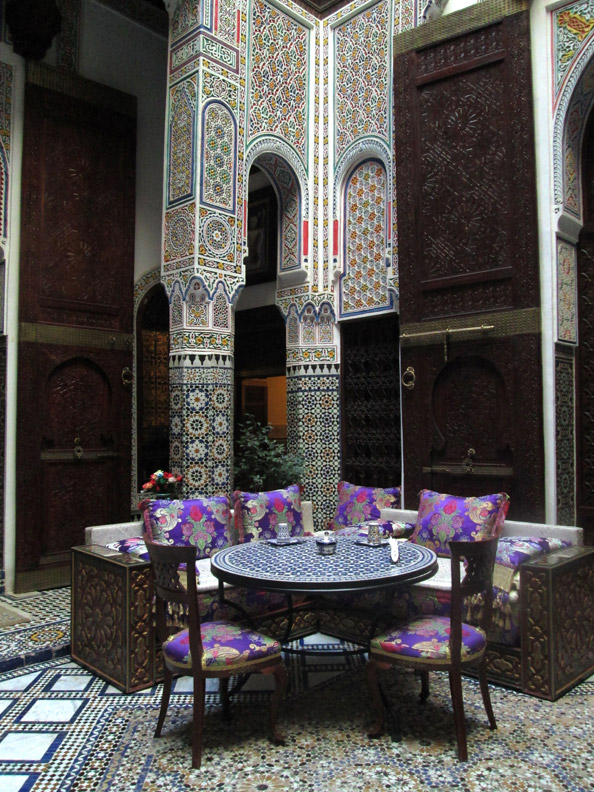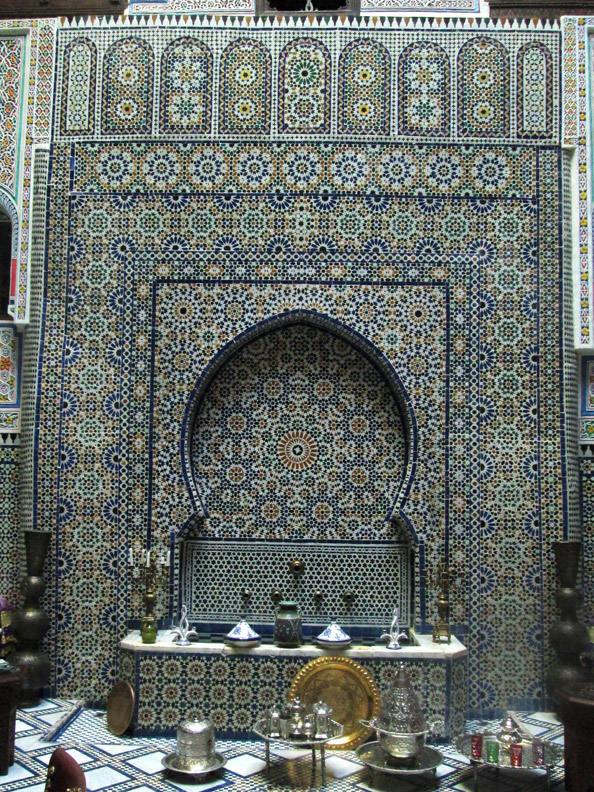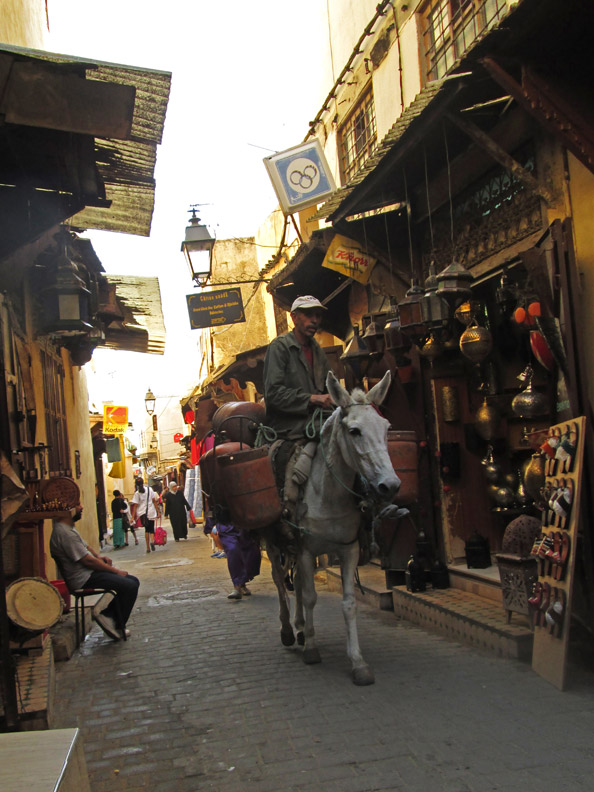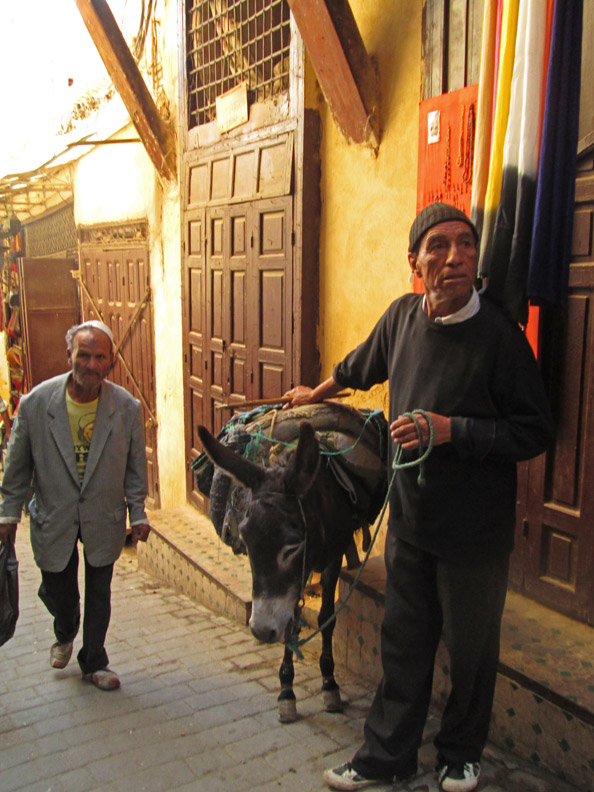How I Did My Research
Out of all the countries I’ve visited, Morocco was one of the hardest countries to get information about. Much of the information you’ll find is unreliable if you can find it at all, and things like bus times, train schedules, and opening hours seem to change frequently. Some of the best information I found was from the Rough Guide to Morocco. I also found some good information from Fodor’s Morocco and Time Out Morocco, but they didn’t seem to have as detailed information as the Rough Guide book. I’d don’t recommend the Lonely Planet book for Morocco as it’s very lacking in useful information.
Outside of books, the next best place to find information about Morocco is on the internet. I used TripAdvisor to ask other travelers about their experiences, and also to find restaurant reviews. WikiTravel is also a good source for information about many of Morocco’s sites and transportation options.
Where To Stay
You can find all kinds of accommodations in Morocco, but one of the best experiences you can have is staying in a riad. A riad is a traditional old house with an open courtyard in the center. This allows light and air in and was useful for cooling the rest of the house. Today, many riads are used as lodging for travelers and are similar to a bed and breakfast. I stayed in riads for the entire trip except in Casablanca, where I was in a hotel, and Merzouga when I went on a camping trip to the Sahara. The hosts at many of the riads I stayed at were able to give helpful advice and were very friendly. I booked everything using Booking.com, which I recommend for their good cancellation policies if you end up changing your mind.

01 | Riad Rcif in Fes, Morocco

02 | Riad Rcif in Fes, Morocco
Finding Your Way Around
Most of the sights in every city in Morocco are located inside the medina. The medina is the old city which is surrounded by thick, high walls that were used as protection from invaders. They’re laid out with narrow streets that wind in circles and are hard to navigate, which was another way to protect from invaders who would get confused if they made it into the medina. The narrow streets mean you usually can’t get cars through, but motorcycles are common and you have to be careful to watch out for them as they fly past. Also common are mules used to move goods through the medina.
I like to map things out so I know where I’m going and how to get there, but this was especially challenging in Morocco. While I usually use Google Maps to lay things out, I discovered that many places in Morocco either aren’t on Google Maps, or they’re not where Google says they are. Because of this, using the maps from Rough Guides or Lonely Planet proved much more reliable. If you have a phone with GPS, I’d recommend installing Maps With Me (also called Maps.Me) so you can find your way around.

03 | A mule in the medina of Fes, Morocco

04 | A mule in the medina of Fes, Morocco
Transportation In Morocco
I traveled entirely by trains and buses, which is easy to do and very cheap. You can find train schedules at ONCF’s website, but you won’t be able to buy tickets until you’re at the station since their website only works with Moroccan credit cards. When purchasing tickets, I’d recommend writing out what tickets you want to buy ahead of time, in French if possible. You’ll also want to keep in mind that they don’t use AM and PM for times, but instead use the 24 hour system. So if you want a ticket for 7pm, you’ll want to write down 19:00, otherwise you’ll get a ticket for 7am. Also keep in mind that the month and day format is the opposite of what’s used in the United States. So while 9/10 is September 10 in the United States, 9/10 would actually be October 9 in Morocco. If you must buy tickets before getting to Morocco, there’s more information on Seat 61 about where you can book through an agency.
There are first and second class seats available on all trains, with little difference in price between the two. The first class seats will be guaranteed to have air conditioning and they’re worth the extra cost. I booked almost all second class seats, and ended up wishing I’d opted for first since it was pretty warm on the second class trains, but second class is fine if you’re on a budget. One important distinction between first and second class is that you can book a specific seat in first class, while second class you are simply issued a ticket, but not for a specific seat. If you want to guarantee a specific seat, or need seats that are next to each other, it can be better to get first class. However, getting second class means that the train can never sell out, and you’re also allowed to leave on a later train without needing to buy another ticket for the new time (I learned this after missing two different trains for different reasons).
Buses to several cities, including Essaouira, are connected to the trains and can be booked through the train’s office. There are other bus companies as well, with the two largest being Supratours and CTM. You can check times and fares on their sites, but you’ll have to go to their offices to book your tickets.
It’s fairly easy to get around Morocco by bus or train, but you can also rent a car if your prefer. If you choose to drive, be aware that Morocco is known as a somewhat dangerous place to drive and the cost of gas/petrol can be high. If you’re traveling between Marrakesh and Fes through the area around the Sahara, I’m told that gas stations can be few and far between, so make sure you fill up when you can.
When traveling around cities, cabs are common, but just as common are drivers who claim that their meters are broken because they don’t want to use them (so they can charge you more, of course). Always make sure to negotiate a price before getting in.
Money + Electricity in Morocco
The currency of Morocco is the dirham, abbreviated as dh, or in these blog posts as MAD. The easiest way to get cash in Morocco is to use an ATM. You’ll get a better rate than with a money changer, but make sure you’re aware of any fees that your bank may charge for foreign withdrawals. There are ATMs readily available in most large cities and towns, and at the Casablanca airport, but you might have trouble finding them in more remote areas.
Plugs in Morocco use the 2 pin “Europrong”, which are 220V. If you’re American or Canadian, your devices may be designed for 110V, which will not work unless you use a power converter as well as a power adapter. However, many devices are now designed for 110–220V, which will work fine. If you forget adapters on your trip, I’d recommend buying them in the souks, which will be much cheaper than buying them at a store.








Leave a Reply
You must be logged in to post a comment.